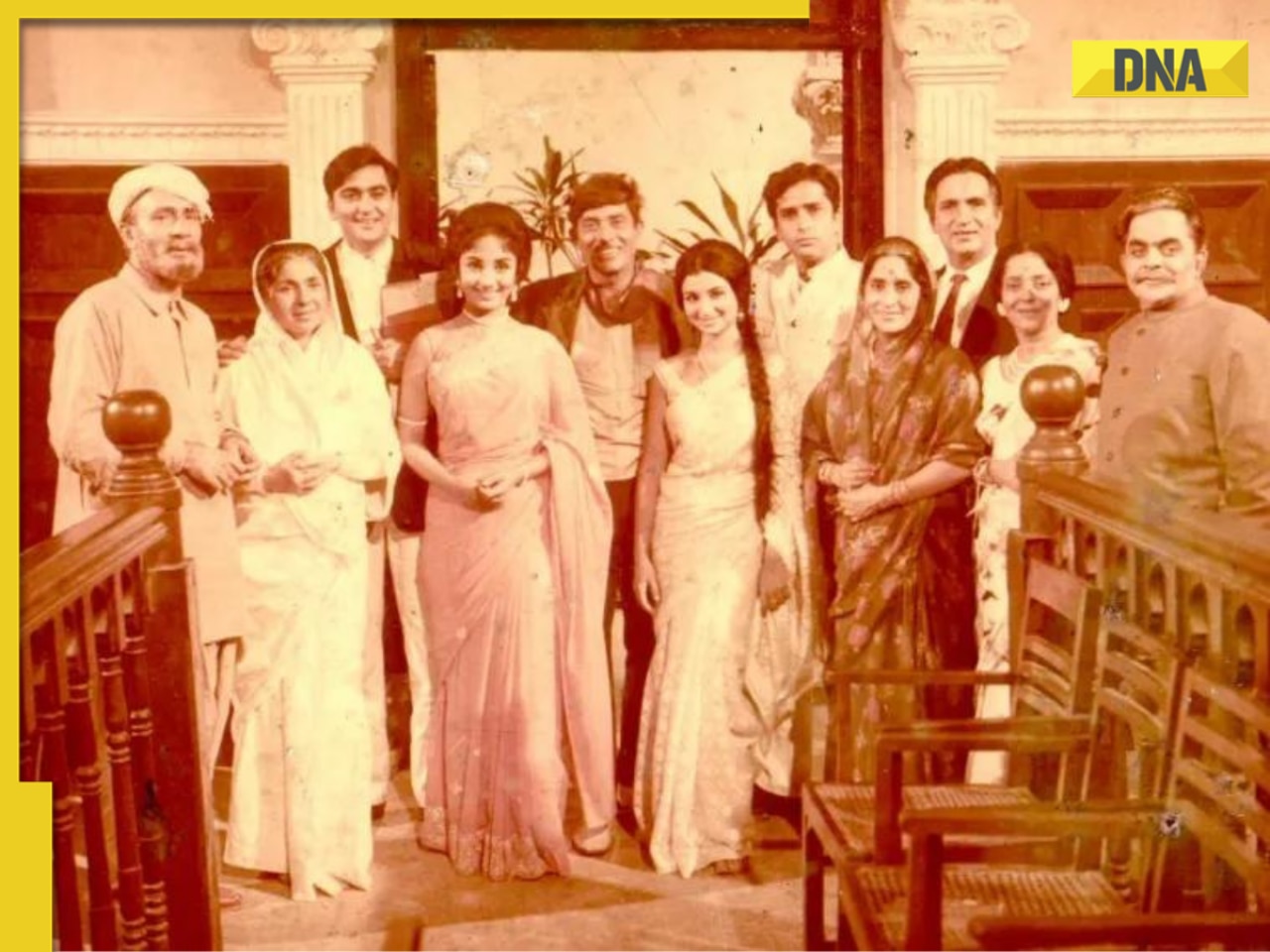Soon, the street corners will reverberate with chants of Ganpati Bappa Morya, and for ten days until immersion, the Elephant God will be an honoured city guest
While bigger mandals may be resisting change, there has been a noticeable shift in the mindset of small households
Soon, the street corners will reverberate with chants of Ganpati Bappa Morya, and for ten days until immersion, the Elephant God will be an honoured city guest. But in a more environmentally aware day and age, many Mumbaikars believe that it’s time Ganesh Chaturthi becomes an eco-friendly festival.
“It all started with the competition between the various mandals to come up with the best Ganesh idol. Hence the concept of making the idols with plaster of Paris came into existence. Idols made of plaster of Paris are a lot cheaper than the clay ones that were popular at one time,” says environmentalist Debi Goenka. However, because of the cost factor, plaster of Paris-made idols became the popular choice. “But its harmful side — especially when it comes to immersing the idols — has been completely neglected,” says Goenka.
Until recently, most people were unaware of the harmful effects of plaster of Paris, which contains chemicals such as gypsum, sulphur, phosphorous, and magnesium. This is compounded by the use of materials like Thermocol and plastic that are not easily biodegradable.
The mayor, Shubha Raul, has a different take on the subject. “It’s true that eco-friendly Ganpati idols are more favourable than those made of plaster of Paris, but the immersions always cause a problem. This year, we are going to have 22 artificial lakes in Mumbai just for immersion purposes,” she says. This, she believes, will help minimise the damage caused during the visarjan.
“The big Ganpati mandals are the role models, and if they adopt a more eco-friendly approach, others will surely follow,” says Raul. But in this, Raul is fighting a losing battle. Says Sanjay Gadekar, a committee member of the famous ‘Lalbaugcha Raja’: “I don’t understand the basis of this debate. All through the year, when factories emit chemicals, people throw rubbish into the sea and even defecate in the water, no one makes a hue and cry. We, at Lalbaug, are very responsible in our arrangements. We make sure that we immerse our 12-foot high idol deep into the sea, so there is no question of the moorti not dissolving.”
But while the bigger mandals may be resisting change, there has been a noticeable shift in the attitudes of small households. Sushma Pandit, a housewife, says, “Initially, everyone wanted to have the traditional idol, but I was opposed to the idea.I don’t see any harm in going green.”
Jigna Shah, the owner Green Ways, is doing a brisk trade in selling eco-friendly Ganesha idols. She says, “We have been selling eco-friendly Ganpati for two years and the demand in increasing.”
This year, the Pandit family chose to purchase an eco-friendly idol. Devang Patel says, “The Lord looks as splendid as ever. We are the first in our building to take this step, and have received positive support from the residents.”
But while these small efforts are a step in the direction, environmentalists say that they are just a drop in the ocean.
![submenu-img]() House of the Dragon season 2 trailer: Rhaenyra wages an unwinnable war against Aegon, Dance of the Dragons begins
House of the Dragon season 2 trailer: Rhaenyra wages an unwinnable war against Aegon, Dance of the Dragons begins![submenu-img]() Apple partners up with Google against unwanted tracker, users will be alerted if…
Apple partners up with Google against unwanted tracker, users will be alerted if…![submenu-img]() Meet actress whose debut film was superhit, got married at peak of career, was left heartbroken, quit acting due to..
Meet actress whose debut film was superhit, got married at peak of career, was left heartbroken, quit acting due to..![submenu-img]() Who is the real owner of Delhi's Connaught Place and who collects rent from here?
Who is the real owner of Delhi's Connaught Place and who collects rent from here?![submenu-img]() 'We're never going to allow China...': US President Biden announces tariffs on Chinese goods to address trade imbalance
'We're never going to allow China...': US President Biden announces tariffs on Chinese goods to address trade imbalance![submenu-img]() Meet man who is 47, aspires to crack UPSC, has taken 73 Prelims, 43 Mains, Vikas Divyakirti is his...
Meet man who is 47, aspires to crack UPSC, has taken 73 Prelims, 43 Mains, Vikas Divyakirti is his...![submenu-img]() IIT graduate gets job with Rs 100 crore salary package, fired within a year, he is now working as…
IIT graduate gets job with Rs 100 crore salary package, fired within a year, he is now working as…![submenu-img]() Goa Board SSC Result 2024: GBSHSE Class 10 results to be out today; check time, direct link here
Goa Board SSC Result 2024: GBSHSE Class 10 results to be out today; check time, direct link here![submenu-img]() CUET-UG 2024 scheduled for tomorrow postponed for Delhi centres; check new exam date here
CUET-UG 2024 scheduled for tomorrow postponed for Delhi centres; check new exam date here![submenu-img]() Meet man who lost eyesight at 8, bagged record-breaking job package at Microsoft, not from IIT, NIT, VIT, his salary is…
Meet man who lost eyesight at 8, bagged record-breaking job package at Microsoft, not from IIT, NIT, VIT, his salary is…![submenu-img]() DNA Verified: Is CAA an anti-Muslim law? Centre terms news report as 'misleading'
DNA Verified: Is CAA an anti-Muslim law? Centre terms news report as 'misleading'![submenu-img]() DNA Verified: Lok Sabha Elections 2024 to be held on April 19? Know truth behind viral message
DNA Verified: Lok Sabha Elections 2024 to be held on April 19? Know truth behind viral message![submenu-img]() DNA Verified: Modi govt giving students free laptops under 'One Student One Laptop' scheme? Know truth here
DNA Verified: Modi govt giving students free laptops under 'One Student One Laptop' scheme? Know truth here![submenu-img]() DNA Verified: Shah Rukh Khan denies reports of his role in release of India's naval officers from Qatar
DNA Verified: Shah Rukh Khan denies reports of his role in release of India's naval officers from Qatar![submenu-img]() DNA Verified: Is govt providing Rs 1.6 lakh benefit to girls under PM Ladli Laxmi Yojana? Know truth
DNA Verified: Is govt providing Rs 1.6 lakh benefit to girls under PM Ladli Laxmi Yojana? Know truth![submenu-img]() Ananya Panday stuns in unseen bikini pictures in first post amid breakup reports, fans call it 'Aditya Roy Kapur's loss'
Ananya Panday stuns in unseen bikini pictures in first post amid breakup reports, fans call it 'Aditya Roy Kapur's loss'![submenu-img]() Remember Harsh Lunia? Just Mohabbat child star, here's how former actor looks now, his wife is Bollywood's popular...
Remember Harsh Lunia? Just Mohabbat child star, here's how former actor looks now, his wife is Bollywood's popular...![submenu-img]() Mother's Day 2024: Bollywood supermoms who balance motherhood, acting, and run multi-crore businesses
Mother's Day 2024: Bollywood supermoms who balance motherhood, acting, and run multi-crore businesses![submenu-img]() Rocky Aur Rani's Golu aka Anjali Anand shocks fans with drastic weight loss without gym, says fitness secret is...
Rocky Aur Rani's Golu aka Anjali Anand shocks fans with drastic weight loss without gym, says fitness secret is...![submenu-img]() In pics: Ram Charan gets mobbed by fans during his visit to Pithapuram for ‘indirect campaign’ for uncle Pawan Kalyan
In pics: Ram Charan gets mobbed by fans during his visit to Pithapuram for ‘indirect campaign’ for uncle Pawan Kalyan![submenu-img]() Haryana Political Crisis: Will 3 independent MLAs support withdrawal impact the present Nayab Saini led-BJP government?
Haryana Political Crisis: Will 3 independent MLAs support withdrawal impact the present Nayab Saini led-BJP government?![submenu-img]() DNA Explainer: Why Harvey Weinstein's rape conviction was overturned, will beleaguered Hollywood mogul get out of jail?
DNA Explainer: Why Harvey Weinstein's rape conviction was overturned, will beleaguered Hollywood mogul get out of jail?![submenu-img]() What is inheritance tax?
What is inheritance tax?![submenu-img]() DNA Explainer: What is cloud seeding which is blamed for wreaking havoc in Dubai?
DNA Explainer: What is cloud seeding which is blamed for wreaking havoc in Dubai?![submenu-img]() DNA Explainer: What is Israel's Arrow-3 defence system used to intercept Iran's missile attack?
DNA Explainer: What is Israel's Arrow-3 defence system used to intercept Iran's missile attack?![submenu-img]() House of the Dragon season 2 trailer: Rhaenyra wages an unwinnable war against Aegon, Dance of the Dragons begins
House of the Dragon season 2 trailer: Rhaenyra wages an unwinnable war against Aegon, Dance of the Dragons begins![submenu-img]() Meet actress whose debut film was superhit, got married at peak of career, was left heartbroken, quit acting due to..
Meet actress whose debut film was superhit, got married at peak of career, was left heartbroken, quit acting due to..![submenu-img]() 'Ek actress 9 log saath leke...': Farah Khan criticises entourage culture in Bollywood
'Ek actress 9 log saath leke...': Farah Khan criticises entourage culture in Bollywood![submenu-img]() Bollywood’s 1st multi-starrer had 8 stars, makers were told not to cast Kapoors; not Sholay, Nagin, Shaan, Jaani Dushman
Bollywood’s 1st multi-starrer had 8 stars, makers were told not to cast Kapoors; not Sholay, Nagin, Shaan, Jaani Dushman![submenu-img]() Iranian filmmaker Mohammad Rasoulof flees country on foot after prison sentence ahead of his film's premiere at Cannes
Iranian filmmaker Mohammad Rasoulof flees country on foot after prison sentence ahead of his film's premiere at Cannes![submenu-img]() Who is the real owner of Delhi's Connaught Place and who collects rent from here?
Who is the real owner of Delhi's Connaught Place and who collects rent from here?![submenu-img]() Viral video: Chinese artist's flaming 'stairway to heaven' stuns internet, watch
Viral video: Chinese artist's flaming 'stairway to heaven' stuns internet, watch![submenu-img]() Video: White House plays 'Sare Jahan Se Achha Hindustan Hamara" at AANHPI heritage month celebration
Video: White House plays 'Sare Jahan Se Achha Hindustan Hamara" at AANHPI heritage month celebration![submenu-img]() Viral video: Bear rides motorcycle sidecar in Russia, internet is stunned
Viral video: Bear rides motorcycle sidecar in Russia, internet is stunned![submenu-img]() Driver caught on camera running over female toll plaza staff on Delhi-Meerut expressway, watch video
Driver caught on camera running over female toll plaza staff on Delhi-Meerut expressway, watch video
























































)
)
)
)
)
)